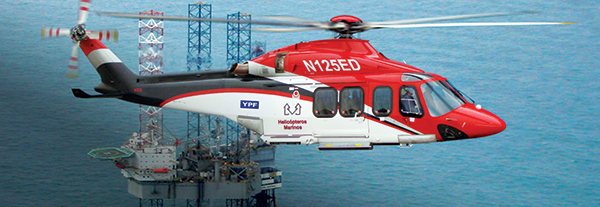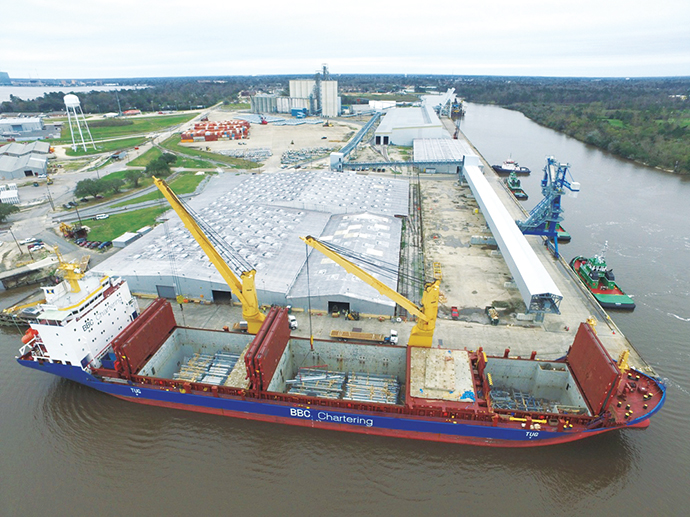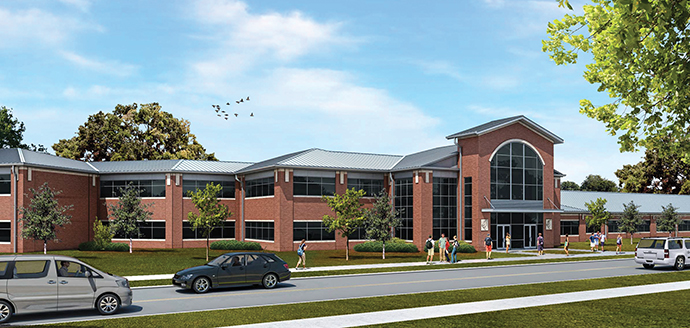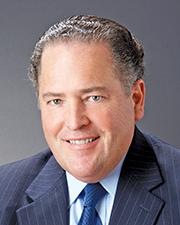In the United States Armed Forces, few jobs are more important than the civilian workers who keep America’s fighting planes in the air.
Increasingly, the US military is turning to the workers of Southwest Louisiana to do that job.
At Chennault International Airport in Lake Charles, Northrop Grumman is steadily growing its workforce to handle the maintenance, repair and overhaul of two of the most important aircraft in the fleet of the US Air Force: the Joint STARS surveillance aircraft and the KC-10 aerial refueling tanker.
Without them, the customary air supremacy of the USAF in battle would be lost. With them, America patrols the skies to keep the free world free.
No one knows this better than the 500 men and women who are employed at the 1,050-acre Lake Charles Maintenance and Modification Center for Northrop Grumman at Chennault. Statewide, Northrop Grumman employs 700 MRO workers at a combined annual payroll of $42 million. Another $10 million annually goes to 236 suppliers to the defense contractor.
“Right now we are at 933,000 sq. ft. on the Chennault campus. That includes three hangars, a back shop where we build parts to support our program, and an office and support facility,” says Michael Flatt, site director for Northrop Grumman at Chennault. “This past year we celebrated the delivery of the 150th KC-10 aircraft and the 100th Joint STARS aircraft.”
Flatt says Northrop Grumman likes Lake Charles because “the state offers us excellent public and private partnerships. We work closely with Louisiana Economic Development. Louisiana is very business-friendly. And we have a lot of skilled talent here. McNeese State University has an outstanding engineering program. SOWELA Technical College has an aviation program that funnels mechanics to us on site at Chennault. Plus, Calcasieu Parish has an outstanding school system.”
He adds that “many quality-of-life amenities are here. The cost of living is affordable. Lake Charles has good schools and good health care. People live well and eat well. It is a great place to raise a family.”
Growth is naturally occurring at the company’s Lake Charles site, Flatt says. “We look to ensure the future of our anchor KC-10 and Joint STARS programs,” he notes. “That is our top priority. We are always looking to bring future opportunities here when they are a good fit for our workforce. We feel that being here in Southwest Louisiana makes us an affordable site for aircraft maintenance.”

He explains that “we handle all of the Joint STARS MRO work at this facility; we split the KC-10 MRO work with another facility in Greensboro, N.C.” To keep up with the workload, Northrop Grumman expanded its facility two years ago, adding a building to do composite repairs and other maintenance.
“The aviation industry is growing across the state,” Flatt says. “There are multiple sites supporting aviation in Southwest Louisiana. We see this as an aviation center. Louisiana provides great support for the aerospace industry as a whole. We are halfway between New Orleans and Houston, and Lake Charles has great intermodal transportation. We have Chennault, the Port of Lake Charles, Interstate 10 and multiple rail connections. And Chennault has been an excellent landlord.”
From AAR to Air Cargo
Northrop Grumman has company in the MRO sector at Chennault. AAR Corp. maintains its own aviation MRO complex on site at the airport, and like its neighbor, is growing too. The largest provider of aircraft maintenance on the continent opened its sixth North American MRO facility with a $21-million investment at Chennault in 2014. Since then, it has been increasing its workforce.
AAR grew its total footprint at Chennault last year to over 750,000 sq. ft. to service wide-body aircraft including the Airbus 330 and 340 and the Boeing 767 and 777. The company now occupies seven hangars and is expected to employ about 800 workers on site by 2017.
Randy Robb, executive director of Chennault, estimates that AAR is on pace to add about 1 million man-hours of work. “Things are looking very promising,” he says. “We’re attempting to relocate our golf course so that we can start a $250-million development for an air cargo center, more warehouses and more hangars. We’re working with AAR to modify hangar H to put an A380 aircraft in there. We need six more inches of tail room. We have to make the tail door at least a foot higher. We’re also widening taxiway Alpha. That is a three-year, $12-million project and we are in the final phase. That will support any size and weight of aircraft.”
With 50,000 takeoffs and landings per year and a 10,700-foot runway, Chennault ranks as the fourth busiest airport in Louisiana.
“We’re doing our very best to support the industrial growth in the region,” Robb says. “That is why we are moving in the direction of handling more air cargo. Our purpose in life at Chennault is to create more jobs and support economic development.”
Joe Torres, general manager of Million Air Lake Charles, concurs. “We are the terminal for Chennault. We provide customer service for the pilots who use Chennault,” he says. “We do it really well and we have a lot of repeat customers.”
In fact, Million Air does its job so well that it has been named the Best Large Fixed Base Operator by Pro Pilot the past four years in a row.
“Our job is to accommodate the needs of pilots,” Torres says. “In 2015, we had close to 4,900 aircraft that came into Chennault that we provided service to. One-third was civilian traffic. Two-thirds was military traffic. Of the civilian traffic, two-thirds came from charter aircraft and corporate jets and one-third came from non-jet general aviation aircraft.”
Torres says the aviation industry is vital to Southwest Louisiana. “We’re becoming a bigger hub for LNG, offshore oil and the entertainment sectors,” he says. “Some of the workers fly in and fly out. Aviation is a critical aspect of these growing industries. The folks at Chennault are very forward-looking. They are always looking for opportunities and analyzing the market. With the port, rail and highway access, Chennault is an untapped jewel for cargo access in the future. Plus, we are right in the middle of the Gulf region between Houston and Florida.”
Helicopters Like Lake Charles Too
Heath Allen, executive director of the Lake Charles Regional Airport, has seen his share of the aviation business grow as well. The operational headquarters of Era Helicopters, LCRA fulfills a critical role in supporting the offshore oil and gas industry.
“We opened a new terminal in 2009 and every year since then, we have seen our air service increase,” says Allen. “We currently handle about 140,000 passengers a year.”
With 350 employees at LCRA, Era is “by far our largest tenant,” notes Allen. “They have 700 to 800 employees along the Gulf Coast, and they operate 160 helicopters worldwide. They just opened a huge facility in Houma, La., and they were expanding prior to the drop in the price of oil.”

PHI, headquartered in Lafayette, maintains another 12 helicopters at LCRA, also to serve the offshore rigs in the Gulf of Mexico.
“We have 32 tenants at LCRA,” says Allen. “We have aviation, a golf driving range, concrete companies, a 300-acre master-planned industrial park, a marine environmental company, rental cars and a gas station. We have about 2,000 acres. We’re one of the larger airports in the state.”
Keeping up with the growth in aviation in Southwest Louisiana means continual investment into upgrades and expansion projects at LCRA, says Allen. “We have a master plan with a capital improvement plan over 20 years,” he says. “We’re doing $3 million to $4 million in expansions each year. Right now, we’re changing our lighting system at the airport to an LED system. We’re also improving our runways and taxiways. We spent $4.5 million on improvements in 2015, and we’ll spend another $3 million this year.”
With 500 acres in available greenfield sites, Allen says that LCRA is poised to grow. “Our hangars are full,” he adds. “We have been in negotiations with outside parties to come in and build new hangars. We have very good transportation access. Common Street and Gulf Highway take you straight to Interstate 210, which connects with I-10. We’re also close to the Port of Lake Charles and the ship channel.”
Don Pierson, secretary of Louisiana Economic Development, says that Southwest Louisiana offers aviation companies an extremely competitive location. “We lead the nation in FDI per capita; we have the best customized workforce program in the nation; and we are one of the fastest-growing technology clusters as well,” he says.
“We offer significantly lower ongoing costs through our pro-business environment, strategic location in the Southern manufacturing cluster, and complete workforce support,” says Pierson. “We offer a competitive tax structure, customized incentive package, lower wage levels, low utility costs and a right-to-work state.”

This environment has attracted some of the biggest names in aviation and aerospace to Louisiana, notes Pierson — Boeing, Raytheon, Northrop Grumman, AAR, Bell Helicopter, PHI, Era Helicopters, Lockheed Martin, NASA and Halliburton, among others.
“Chennault International Airport in Lake Charles is living up to its reputation as America’s premier international airport,” says Pierson. “Over the past 25 years, Chennault has had a cumulative economic impact of more than $5.5 billion in the Lake Charles area.”
To keep that growth going, “the State of Louisiana is funding $3.7 million in enhancement to faculty, curricula, training equipment and technology resources at SOWELA Technical Community College to establish a national Aircraft Maintenance MRO Center of Excellence, which will provide a pipeline of well-qualified talent to the Chennault International Airport MRO service providers,” adds Pierson.
McNeese State Fulfills Vital Role
Dr. Philip Williams, president of 8,200-student McNeese State University in Lake Charles, says the graduates of his school are vital to the success of the aviation industry in Southwest Louisiana.
“McNeese State is the only four-year university in the five-parish region. We are a comprehensive university,” he says. “An economist in Texas did a study and found that McNeese has a $371.6-million annual economic impact on the region and a $407.8-million annual economic impact on the state.”
Pay School Inc. ranked McNeese State’s College of Engineering as third in the nation in return on investment among all schools in the US.
US News & World Report has named McNeese State one of the best regional universities in the South for five years in a row. “Our student engineers took second place in an international mechanical engineering contest for robotic engineering,” says Williams. “We had a writer win the Pulitzer Prize for fiction writing two years ago. McNeese State is improving its reputation. We are having a national and international impact.”

The same can be said of Southwest Louisiana, says George Swift, president and CEO of the Southwest Louisiana Economic Development Alliance. With $97 billion in announced projects in the region — including $33 billion in industrial construction projects that have already been signed — the parishes of Allen, Beauregard, Calcasieu, Cameron and Jefferson Davis collectively outperform most US states.
SASOL is moving forward on its $8.9-billion world-scale petrochemical complex in Westlake. G2X broke ground last month on construction of its $1.6-billion methanol plant at the port; and Cameron LNG and Cheniere Energy continue to move forward on building their large LNG facilities.
“We still have plenty of industrial sites left in Southwest Louisiana. This is a good time to come to the area with all of these energy projects underway,” Swift says. “In addition to energy firms, companies that provide goods and services to the aviation sector can come here. This is becoming an aviation MRO center of excellence. We are building an aviation hub.”
This Investment Profile was prepared under the auspices of the Southwest Louisiana Economic Development Alliance. For more information, contact George Swift at 337-433-3632 or by email at gswift@allianceswla.org

